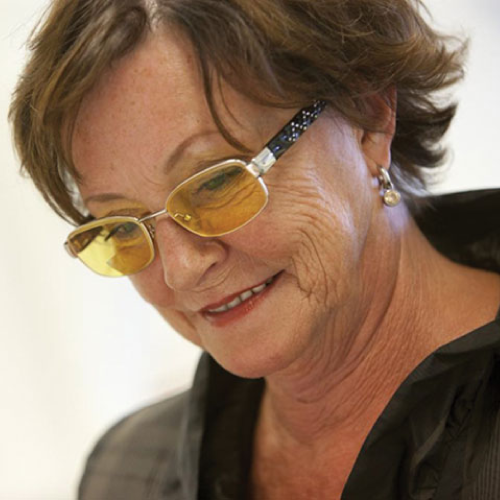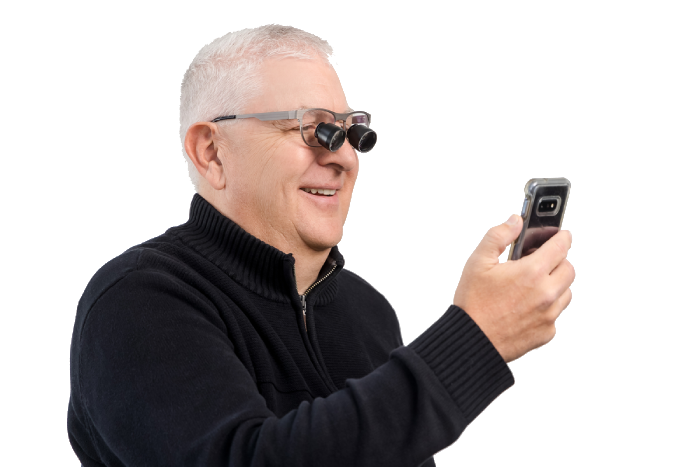Do Again
There is Life After
Vision Loss.
- Macular Degeneration
- Ocular Albinism
- Stargardt Disease
- Glaucoma
- Diabetic Retinopathy
- Rod Cone Dystrophy

Low Vision Services

Immaculate Degeneration Assistance in Minnesota
We are a specialist optometric practice that offers low vision rehabilitation options for patients who are experiencing a significant level of degenerative eye disease. If you’re finding that completing everyday activities is a struggle due to impaired vision or are unable to enjoy the hobbies you used to once love, we can often find an appropriate solution.
Thorough Evaluation of Your Existing Vision
When you start your treatment with us, the first thing we do is to complete a thorough assessment of your existing vision in order to establish what level of eyesight still remains. Often, we are able to make use of a small amount of vision, enhancing it with appropriate lenses until it’s possible to enjoy a reasonable degree of sight.
Low Vision Glasses
Our team has access to a wide range of surgical-grade optical devices that can be customized to your individual visual requirements. Options include telescopic eyeglasses as well as a number of other choices. The eye wear we provide is designed to assist the wearer in performing a particular task – whether you want to be able to drive again, embroider or read, we can often come up with a way to enable you to do so.
Low Vision Optometry Available in Minnesota
The service we provide includes a full low vision assessment, as well as the provision of eyeglasses that are tailored to enable the wearer to complete a specific activity that’s important to them. We know how distressing losing valuable vision can be, which is why we always do whatever we can to help our patients enjoy an improved level of sight through the use of appropriate optical aids. To find out more about our service, or book an appointment, call us at (612) 729-3030 or (888) 882-2040.
Telescopic Eyeglasses
Miniature Binoculars inserted into eyeglasses are called TELESCOPIC SPECTACLES. The patient’s eyeglass prescription as well as the highest quality optics must be used in the system for maximum clarity. Telescopic spectacles can be for one eye (monocular) or two eyes (binocular). The telescope can be mounted in various positions in the glasses.

01.
Bioptic Position
Smaller telescopes mounted above the person’s eyes allow them to view through either the telescope or the “carrier”, the regular prescription lens, by simply moving the head slightly up or down. This position is used for tasks that help a person be mobile like walking, driving, theater, at sporting events, church, or travel.
02.
Full Diameter Position
Either small or larger telescopes are placed in the center of the frame for tasks not requiring mobility. They are used for reading, television, card playing, or simply enjoying seeing the faces of those in conversation.
Prismatic Eyeglasses
Prismatic eyeglasses can be single or double lens systems and incorporate prism to allow the two eyes to work together. They are useful for patients whose eyes are approximately equal in vision and do not require high magnification.
Microscope Eyeglasses
Microscope Eyeglasses are double lens systems that combine the patients eyeglass prescription with the amount of magnification needed. The amount of magnification depends upon the level of remaining vision and the size of the material to be seen. These state of the art optical systems require two lenses piggybacked to reduce the blur and aberrations caused by high powered lenses. Because they require a close working distance, they are usually used with one eye (monocular).
E-Scoop® Glasses
The E-Scoop® lens was developed to bridge the gap between standard eyeglasses and head borne telescopes. Whether your difficulty be night driving, bright light, sunlight, or simply seeing clearly in the distance, the E-Scoop® lens placed over a standard eyeglass prescription will help you see better. The E-Scoop® lens is comprised of five basic optical properties: custom yellow tint, anti-reflective coating, special lens thickness, base curve, and base up prism. When these five optical properties are combined into the E-Scoop lens, the image is enhanced and shifted to a different part of the macula allowing the patient to see better.







